When choosing a retaining wall, there are several types of materials opportunities.
Natural stone, precast concrete blocks, and wood are a few of the most well-liked materials.
Additional possibilities include stone, brick, and poured concrete cladding.
Natural stone retaining walls require more effort, and skill to design and install than wood or prefabricated concrete block barriers.
Cost, strength, and durability are characteristics that will influence your decision on retaining wall materials.
In gardening situations, the weights are often not very heavy, so the types of materials used to build the retaining wall largely determine its load-bearing capacity.
Several retaining walls have already been covered in this article.
So, let’s get started!
Different Types of Retaining Wall Materials:
Here, we’ll talk about some of the most popular retaining wall construction materials and examine how they can best contribute to a structure’s aesthetic appeal.
1. Stone veneer:
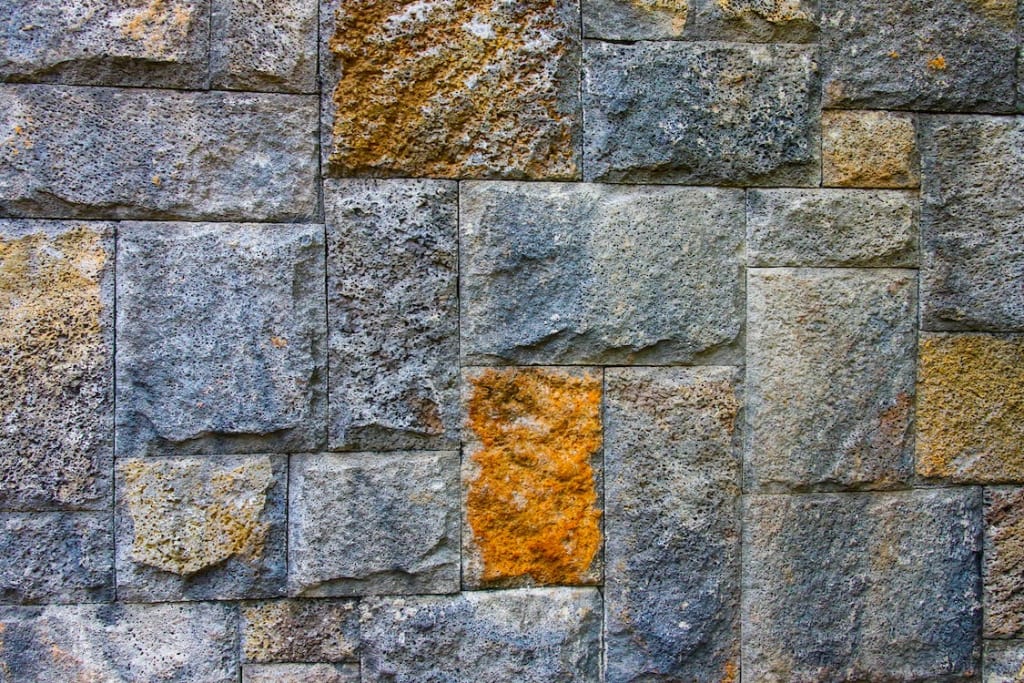
For retaining wall, stone veneer is the best types of materials that can be utilized as a beautiful covering and protective surface.
It is not capable of supporting loads.
This indicates that stone veneer is a decorative element that requires a strong core to function as a wall.
Its appearance is classy and adds its special personality to earn a spot on the list.
Pros:
Durability:
Natural stone has a high level of durability, making it an ideal choice for retaining walls.
Masonry structures are resistant to the effects of heat, cold, snow, and rain.
Appearance:
The texture and appearance of natural stone are exquisite.
Flexibility:
A solid core can be built to virtually any height or thickness.
Light Weight:
Stone veneer is comparatively light in weight even though it is not promoted as the lightest material on the market.
Cons:
High cost:
Natural stone is more expensive than some other man-made materials.
Building a stone veneer retaining wall will be somewhat expensive.
Installation:
Installation of stone veneer requires experienced masons and qualified contractors.
Design issues:
It is not always easy to match all the individual elements with the existing architecture.
Solid Core:
Stone veneer requires two times as much work because it is not a standalone component.
2. Natural stones:
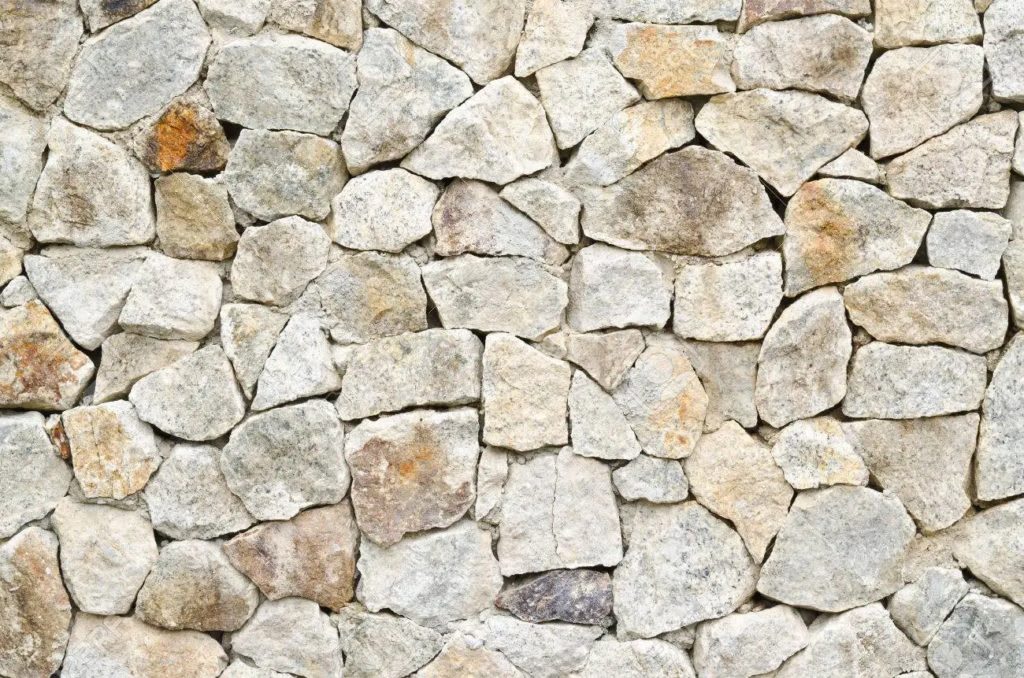
Retaining walls made of natural stone are similar to boulder walls in many ways.
The noticeable difference is that natural stone is much smaller in size than quarry stone, but it does make a difference.
Natural stone provides more design choices than stone slabs while maintaining all the compensations of other types of stone (tradition, strength, durability).
Generally, dry random rubble masonry or random rubble masonry is used to build random rubble masonry walls.
The former is usually built in sparsely populated areas where appearance is less important, while the latter is built in densely populated areas where appearance is an important factor.
Pros:
Appearance:
Natural stone has a breathtakingly attractive appearance and blends well with any classic rustic environment.
Tradition:
The oldest and most reliable retaining wall material for grade transitions is natural stone.
Durability:
Natural stone can last for years if properly installed.
Cons:
High cost:
Stone has always been known as the oldest, but most expensive types of materials for retaining wall.
Drainage Issues:
When it comes to natural stone, drainage issues can escalate quickly.
Weight:
Building a stone wall requires a lot of physical labour.
Stones are heavy and difficult to handle and move.
3. Limestone:
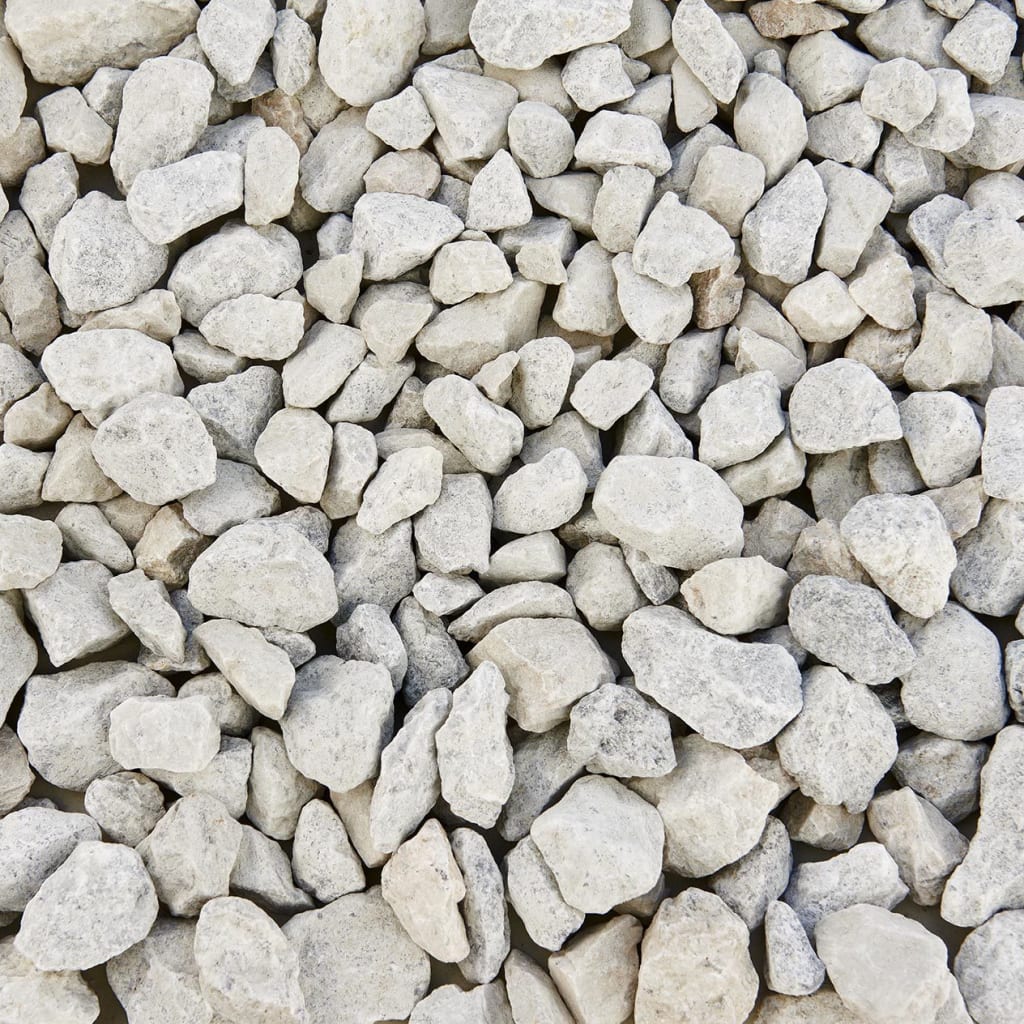
Limestone is a sedimentary rock.
Aragonite and calcite make up the majority.
Although it may seem more brittle than other forms of rock, limestone is used to build some of the world’s oldest structures, such as the Taj Mahal and the Great Pyramid of Giza.
Limestone has advantages and downsides, just like any other material.
Pros:
Appearance:
Limestone is usually grey or yellow.
The area feels incredibly elegant and classic.
Durability:
Limestone is resistant to impact, fire, weather, and insects.
It keeps its elegance and aesthetic appeal despite the passage of time.
Easy to clean and maintain:
The finest feature is that limestone retaining walls are quite simple to clean and maintain.
All they need is a light brush.
Many Choices:
Since limestone offers a wide range of choices, there are plenty of options.
Cons:
Chemical Resistant:
Limestone is resistant to chemicals in addition to being weather resistant.
Rainwater with high carbon dioxide content is the most frequent cause of weathering.
Susceptible to Staining:
Since limestone is relatively porous, it is prone to watermarking and staining from other liquids.
4. Boulders:

The first types of materials used for retaining wall were stone.
They offer the widest range of naturally occurring stones that are easily accessible that originate in a variety of sizes and forms and need no upkeep.
Unlike stone or prefabricated modular blocks, the stone is readily available and ready to use for wall construction even without further refinement.
In addition, they are durable and preserve most of the benefits of the supplied stones.
Pros:
Natural Look:
Boulders complement any landscaping design and rustic flair.
Ease of Use:
Boulder retaining walls are relatively easy to construct.
Availability:
Stones of all shapes and colours are easy to discover.
Durability:
As we have already established, boulder structures have been in use since the dawn of time.
Cons:
Size:
Boulders usually have a large size.
As a result, if you have a small yard, you should not carry out this concept because they take up a lot of space.
Transportation:
If blocks are not readily available locally, transportation will not only be difficult but also expensive.
Height:
As masonry is weak in tension, masonry walls cannot be built as tall as concrete walls.
5. Concrete blocks:

The newest, most popular, and most widely used types of retaining wall materials are concrete blocks.
Because it is artificially produced (precast) and concrete also offers a wide range of choices and flexibility.
Concrete walls are often built on compacted gravel foundations to hold under pressure.
Pros:
Durability:
The longest-lasting wall is made of concrete, which frequently lasts a century or more.
Variety:
There are many different sizes and shapes of concrete blocks.
They can also be used to create curves.
Ease of Installation:
As compared to some others, concrete block walls are generally significantly easier to construct.
Low Maintenance:
It requires essentially no maintenance.
It should be cleaned once a year.
Eco-Friendly:
Concrete walls are non-toxic and environmentally friendly.
They do not release harmful substances or allergens.
Cons:
Architectural Requirements:
Concrete block retaining walls should be carefully planned, and you should consult a professional for help with drainage and other pertinent issues.
Inadequate support can compromise the longevity of the wall.
Wall Height Restrictions:
Retaining walls made of concrete block can be used for walls no taller than four to six feet.
So, if you want to grow your rose beds to a higher height, you have to consider different choices.
Complicated to Remove:
It can be difficult to remove a wall if you ever wish to do so.
6. Gabion:
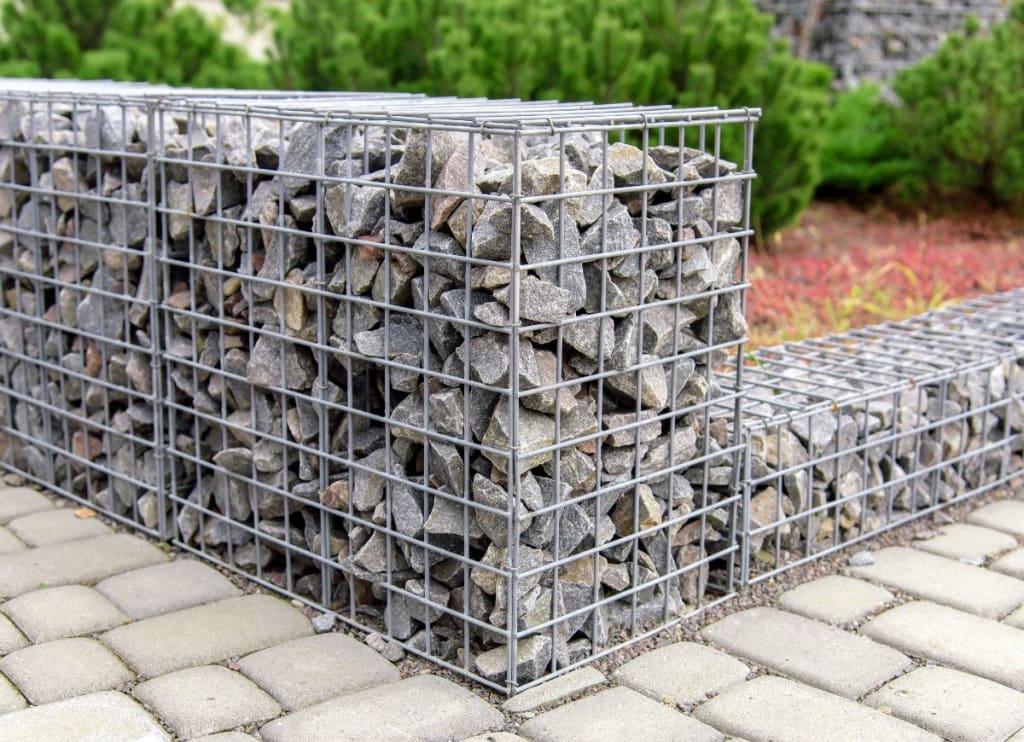
Another ancient technique for creating retaining walls is gabion.
The Italian term “Gabbia,” which means “cage,” is translated as “Gabion.”
The simple steel rod or wire cages contain rock, stone, or rubble.
Gabions are versatile building blocks that work well for retaining walls, especially in landscaping.
On the one hand, they have a natural, attractive look because they are flexible and not too strained.
As a result, soil disturbance caused by horizontal or vertical movement does not contribute significantly to settlement or sliding.
Pros:
Heavy support:
Even in heavy downpours, gabion walls can maintain their stability in any condition.
Flexibility:
A “basket” or wire container is called a “gabion”.
As a result, it is highly adaptable and very easy to integrate into any backyard arrangement.
Upgradability:
Modular gabion walls allow for further expansion.
This means that every component is easily upgradeable or replaceable.
Additionally, plants and silt can be used to fill the voids between the rock or concrete blocks, making the wall even stronger.
Usability:
Gabion retaining walls are easy to construct even for those without a masonry or building background.
Such walls can be erected in a very short time and are very easy to transport.
Cons:
Visual Appeal:
Although gabion walls can blend in with riverside and coastal housing ranges, they do not provide a more attractive aesthetic appearance.
Chance of corrosion:
If you neglect the maintenance aspect, the wire baskets will rust quickly and the entire setup will become useless.
Water Resistant:
Contact with water can damage the cage and its contents as well as the basket. (Depending on the situation).
7. Bricks:

One of the most widely used and most manageable types of materials for building a retaining wall is brick.
Bricks provide a more comfortable, more attractive look than concrete or stone.
They emphasize the traditional architecture and landscape beautifully.
The popularity of bricks in the list of materials for retaining walls is mainly due to their many additional advantages.
Pros:
Low maintenance:
It is a building material with a comparatively low maintenance requirement.
In addition, it keeps its colour so well that it is not often needed.
Eco-Friendly:
Clay and fertile soil are used to make bricks.
They are friendly to the environment.
Additionally, the bricks can be reused for use in future landscape features such as walkways.
Weather and Fire Resistance:
Bricks are unaffected by dampness.
In addition, bricks do not spread fire as they are non-combustible.
Durability:
Although a solid, well-constructed brick retaining wall is not as durable as a wall made of stone, we can still say that it has good durability.
Cons:
Colour Limitations:
While bricks are available in many colours, they do not give as much as other retaining wall materials.
Flexibility:
Due to its flexibility, it is challenging to replace the exterior, but repairing damaged bricks is a bigger challenge.
8. Poured Concrete or Cast-in-situ Concrete:

Poured or cast-in-situ concrete is a common architectural solution produced by pouring concrete directly into forms on site.
Cast-in-situ concrete blends well with modern-looking surroundings because of its clean appearance.
In addition to its thickness, concrete’s ability to withstand soil loads depends on weather and other factors.
Pros:
Strength:
Cast-in-situ concrete walls are significantly stronger than block-built retaining walls because of their higher density.
Versatility:
Concrete can be poured and moulded into any shape, giving you a wide range of design options.
Seems consistent:
It seems to be consistent.
Flexibility:
Poured concrete makes it easy to incorporate other architectural elements such as drainage systems.
Cons:
Crack-Prone:
Concrete walls typically require some form of structural support (e.g., steel rods).
Without this support, they can crack.
The building takes a lot of skill:
It takes skilled hands.
Additionally, the moulds you use to pour the concrete must be spotless and precisely positioned.
Moisture:
When exposed to a lot of water, poured concrete retaining walls get overly moist.
Susceptibility to Chemical Damage:
Many chemicals can easily damage concrete including sulfates, chlorides, and even distilled water.
9. Wood:

The most popular types of materials for retaining wall is wood, but you must be careful when selecting the type of wood for your retaining wall.
Pros:
Natural Look:
Wood retaining walls typically fit in nicely with their surroundings.
Cost:
Wood retaining walls are frequently extremely inexpensive.
Installation Proximity:
Wood retaining walls are excellent for do-it-yourself landscaping projects since they are also relatively simple to install.
Lightweight:
Wood is an extremely lightweight retaining wall material that is easy to disassemble, move and reuse, but is reasonably durable.
Cons:
Limited Lifespan:
Wood has the shortest life span of all retaining wall materials.
A wood retaining wall’s lifespan can be increased with proper maintenance.
Wood Rot:
To a certain extent, you can limit wood rot with proper care.
If you live in an area that receives frequent rains, then this material is not suitable for you to use.
Termite-prone:
This is the area that needs the most attention.
If you don’t take proper care of a wooden structure, it will eventually become vulnerable to termites, which will also damage the retaining wall and backfill.
10. Timber:
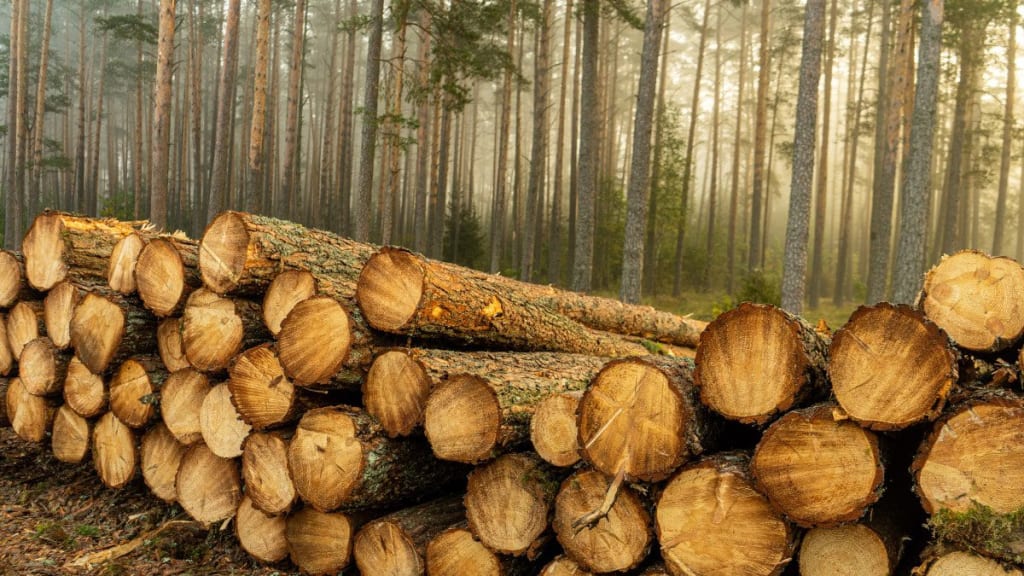
Although wood and timber can seem to be the same thing at first glance, they are not.
After a tree has been cut, all stages of the wood are referred to as timber.
The wood that has undergone processing and been divided into different sizes is referred to as “finished” timber.
They are typically high-quality types of materials utilized as structural timber for the construction of retaining wall.
Pros:
Durability:
Wooden planks are lighter and less durable than thick timber pieces.
Looks good:
The timber itself exudes a rustic beauty.
Therefore, it ought to add a lot of vintage character to your backyard.
Additionally, it will leave a lasting effect on the audience.
Simple installation:
Since concrete or mortar is not required, installation is quick and simple.
Cons:
Timber Rot:
Although timber retaining walls are claimed to have a lifespan of at least 15-20 years, rot can reduce their usefulness.
Lack of Flexibility:
Timber poles are huge and incredibly bulky.
The lack of flexibility in this retaining wall material makes it difficult to create any kind of complex design.
Termite Resistant:
Wood is susceptible to termites.
Best Material for Retaining Wall:
While there are some unavoidable facts about retaining wall materials (stone is heavy, and wood can rot), choosing one involves a great deal of personal preference.
Some individuals find concrete unattractive, while others love its sleek and contemporary look.
Some people might find handling stones difficult, while others would not.
Logistics are important because they affect the cost and utility of different materials.
Examples of these factors include how you will be supplied and how well your property will drain.
FAQ- Types of Retaining Wall Materials:
Q1. What kind of material is ideal for a retaining wall?
Poured concrete is the strongest and most resilient choice.
It can be carved, veneered, dyed, or stamped to mimic mortared stone.
Q2. Which material makes the finest backfill for retaining walls?
It is best to grade the gravel before using it as the backfill for retaining walls.
Gravel’s low void ratio indicates that there won’t be much lateral load.
Weep holes should also be present to allow any leftover water to drain.
Q3. What is the purpose of putting gravel behind a retaining wall?
Backfill is the soil and gravel that surrounds your retaining wall that gives it proper drainage and water rerouting.
To prevent drainage problems or water from accumulating behind your retaining wall, backfill is a crucial component of retaining walls.
Conclusion:
The long-lasting choice is a natural stone laid in the dry-stone method.
This should be done properly; the water ingress will cause the wall to collapse.
In addition, it is the most expensive.
Although wood walls can last only twenty years, they are the least expensive choice and also less durable.
Poured concrete offers the best combination of cost, toughness, and durability.
Section Under: Retaining Walls

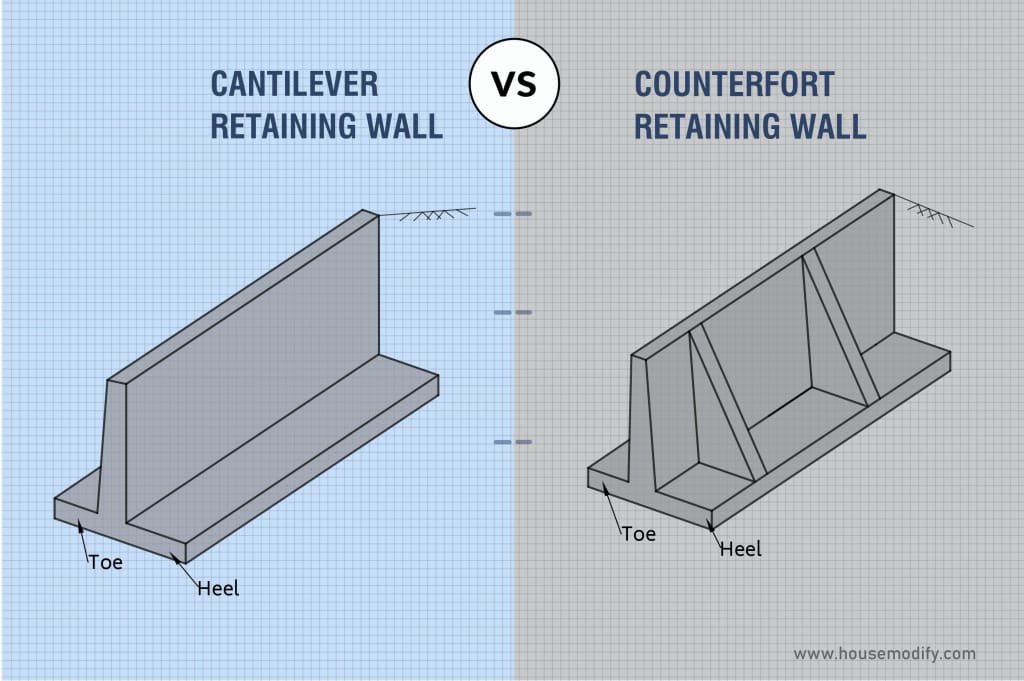
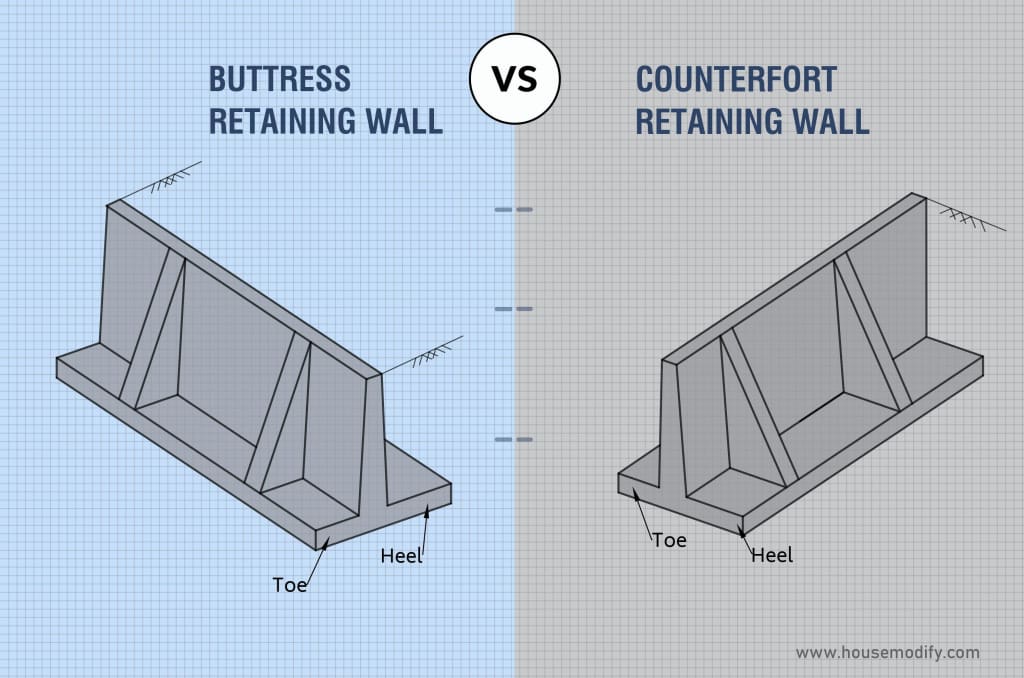
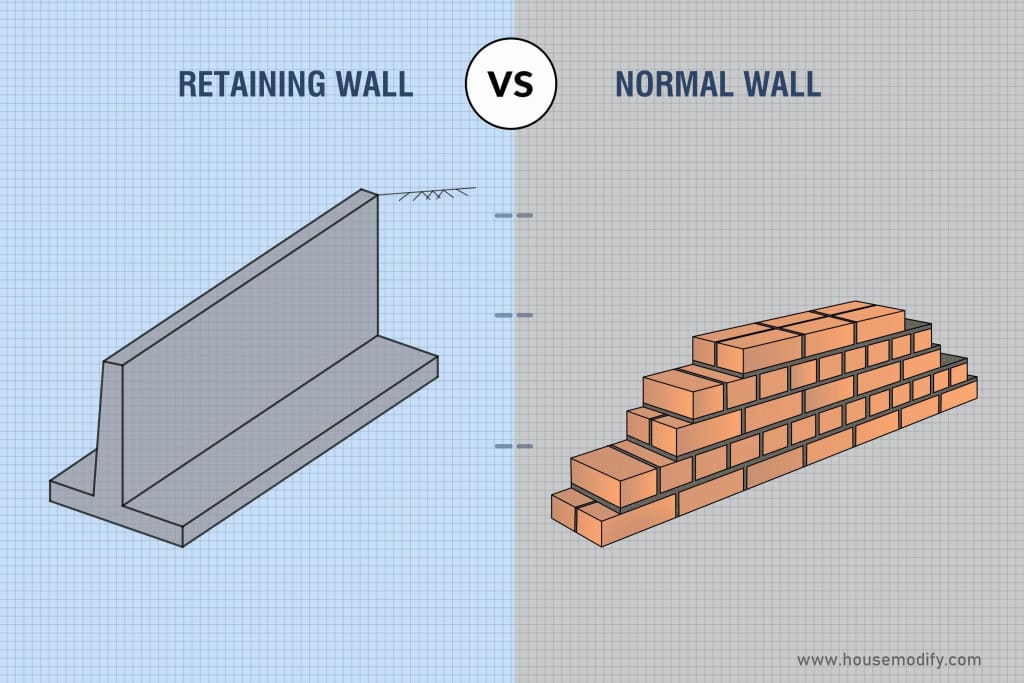
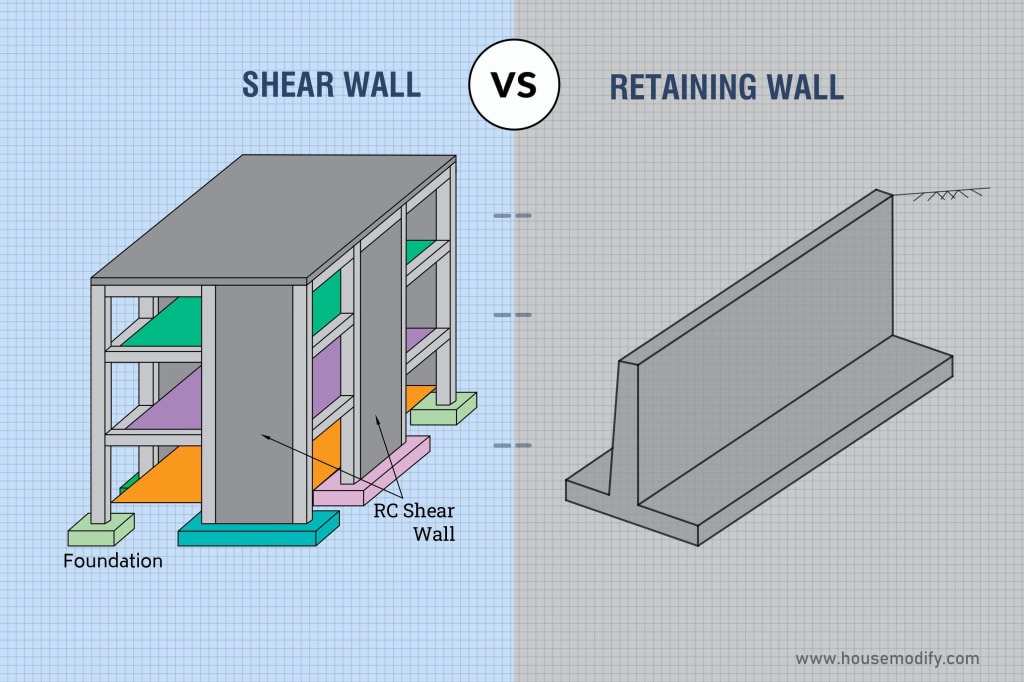
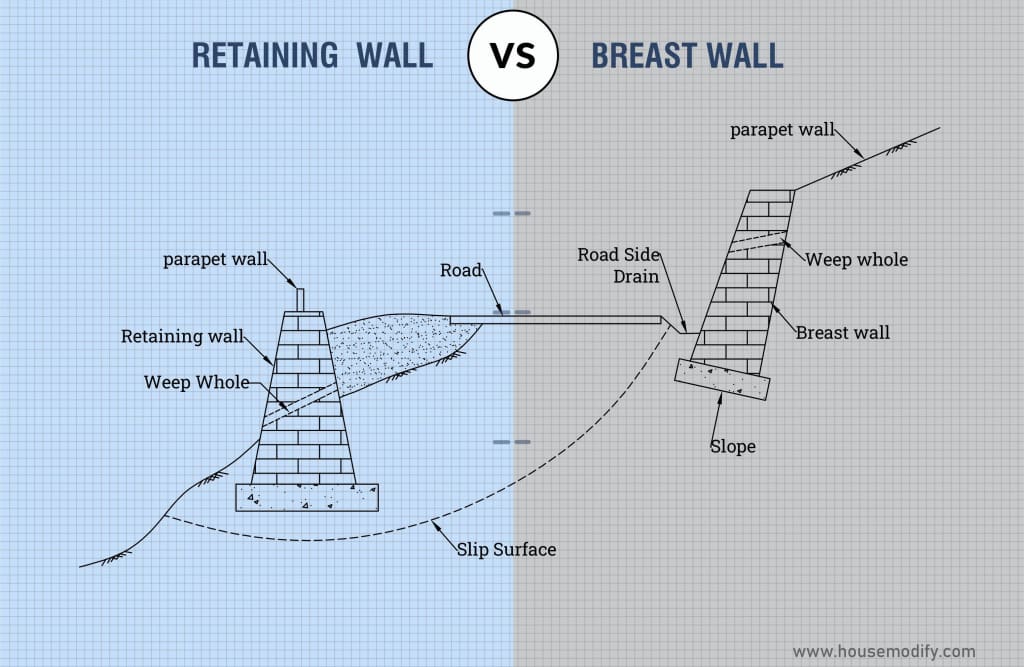




Thank you for explaining that brick retaining walls are low maintenance. We need a retaining wall in our backyard, but we weren’t sure what material to choose. I think brick could work well with our home, so I’ll have to look into this.
I’m glad you informed us that concrete blocks are widely used for retaining walls since they offer great durability that can last a century or even more while also being quite easier to construct. I need retaining walls in my backyard garden soon if I want to avoid erosion during bad weather days. I’ll keep this in mind while I look for contractors to hire for the installation of my concrete block retaining walls soon.